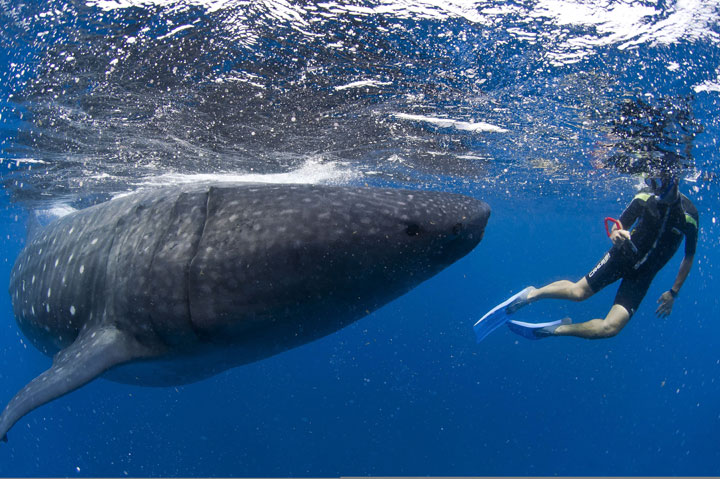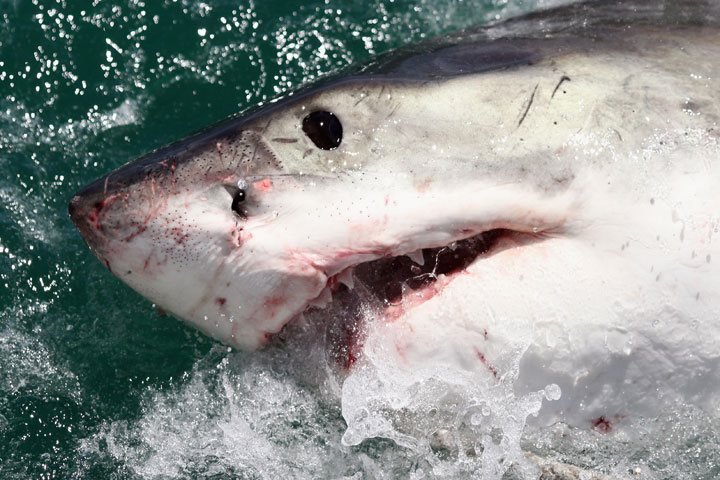TORONTO – From Jaws to Sharknado, people have an evident cinematic fascination with sharks, these mysterious animals from the deep.

But the release of Jaws in 1975 may have started the shark’s downfall in the public psyche. That movie instilled fear by portraying sharks as heartless creatures capable of exacting revenge.
(Peter Benchley – author of the book that was turned into a movie – later became an oceanic conservationist and expressed regret about making the shark a villain.)
There are approximately 450 species of shark, found in every ocean around the world. But recent studies suggest a mind-blowing 100 million sharks are killed each year.
So here are some common shark myths you may have thought were true – but aren’t.
1. All sharks are “man-eaters”
“Absolutely not true,” said Marie Levine, executive director of the Shark Research Institute in New Jersey. “In fact, no sharks are really man-eaters. Some sharks bite people under certain circumstances, but none of them eat people.”
Besides, notes Warren Joyce, a marine biologist and fisheries technician at the Bedford Institute of Oceanography in Nova Scotia, most of them are pretty small.
“There are maybe a handful of species that have the potential to attack people, but usually we’re not in their normal diet.”
READ MORE: WATCH: New Jersey fishermen’s close encounter with great white shark
2. Sharks attack people often
Most shark “attacks” are a case of mistaken identity: the shark sees movement or something bright and assumes that maybe a person’s foot or hand is a fish, and takes a bite.
“All animals learn by exploring their environment,” Levine said. “Sharks don’t have hands and so when they see something unfamiliar, they’ll sometimes rub against it or sometimes they’ll mouth it. And if that’s a person, of course, people call that a shark attack, but really it isn’t.”
The institute keeps a record of global shark attacks. Most of these attacks are lacerations or bites.
Most animals have a menu imprinted in their brains, Levine said. “We’re not on their menu,” she said. “Never have been.”
There are millions of sharks out there, Joyce notes, and there are few attacks.
“If they were after us, they would have no problem picking us off,” he said.
READ MORE: Why these shark researchers are mourning just days after celebrating
3. Sharks are stupid
More work is being done to better understand how smart sharks are. Some sharks return to a specific sites to give birth time and again. And sharks don’t act without thinking: They often inspect their prey first.
That’s not to say some sharks aren’t the brightest.
“Sometimes some sharks are dumb,” Joyce said, “but they don’t live long if they’re dumb.”
Some sharks travel in schools, like the hammerhead. And females are dominant: If there’s a feeding opportunity, other sharks have the wherewithal to move away.
Peter Cooper, with the National Oceanic and Atmospheric Administration’s Fisheries department said he’s heard of zebra sharks being trained. One example is a blind zebra shark from the National Aquarium in Maryland that has been trained to respond to respond to sound.
4. Sharks have to keep moving to stay alive
While most sharks do need to swim to stay alive, that’s not the case for all of them. Some examples include the nurse shark and sand tiger shark.
Tiny blood vessels extract oxygen from the water as it passes over a shark’s gills, allowing sharks to breathe. So if no water moves across them, they suffocate.
But some sharks have spiracles – small holes behind their eyes that allow them to pull in water and pump itover their gills themselves. Species such as the nurse shark use currents that pass over the gills to produce that oxygen.
5. Eating shark can ward off cancer
Though sharks are relatively resistant to cancer, it’s a misconception that they are immune to the disease.
Levine also said that some sharks can contain high levels of methyl mercury or lead, which is very harmful to humans.
And sharks play an important role in our ecosystem, Cooper notes. Being at the top of the food chain in the ocean means that removing them has consequences.
“Once you throw off the natural balance of things, it allows for different populations underneath them to grow,” he said. It takes sharks many years to mature, which means they face an upward challenge in order to repopulate.
Levine is still fascinated by these fish of the deep. And she doesn’t want sharks to get a bad rap.
“Sharks are wonderful animals. They really enrich our world and to try to make them into these cartoon monsters is sad. And it’s demeaning to the animals, and it’s disrespectful to the public.”





Comments